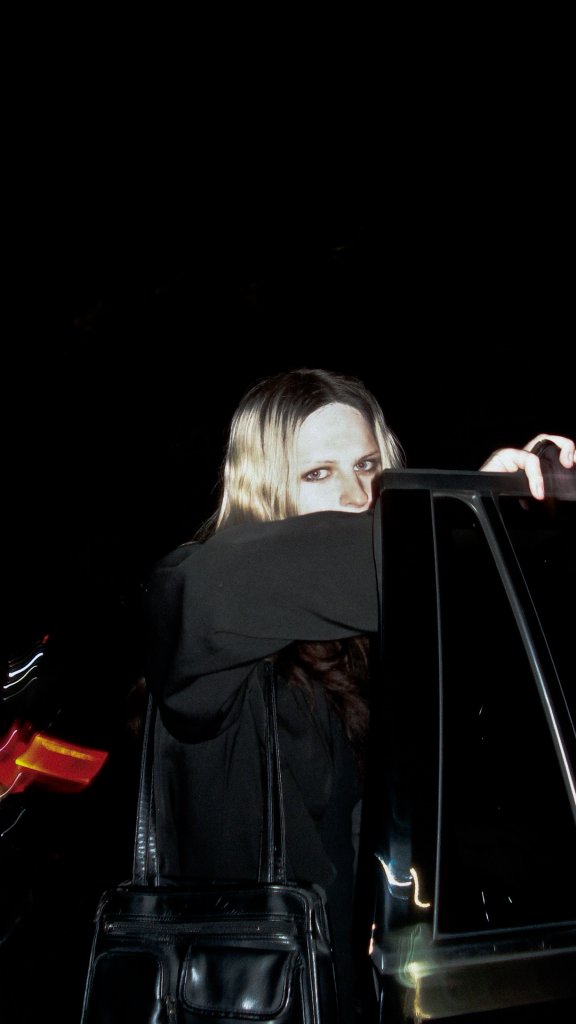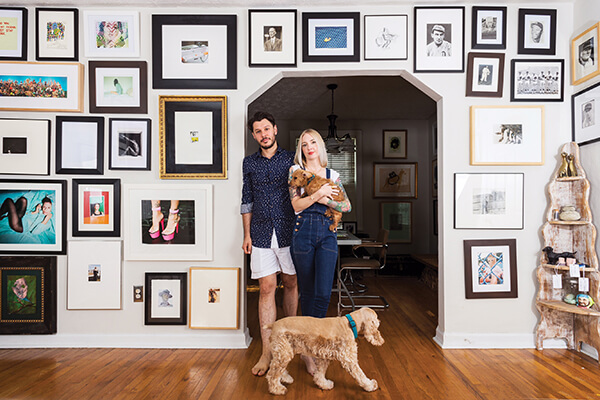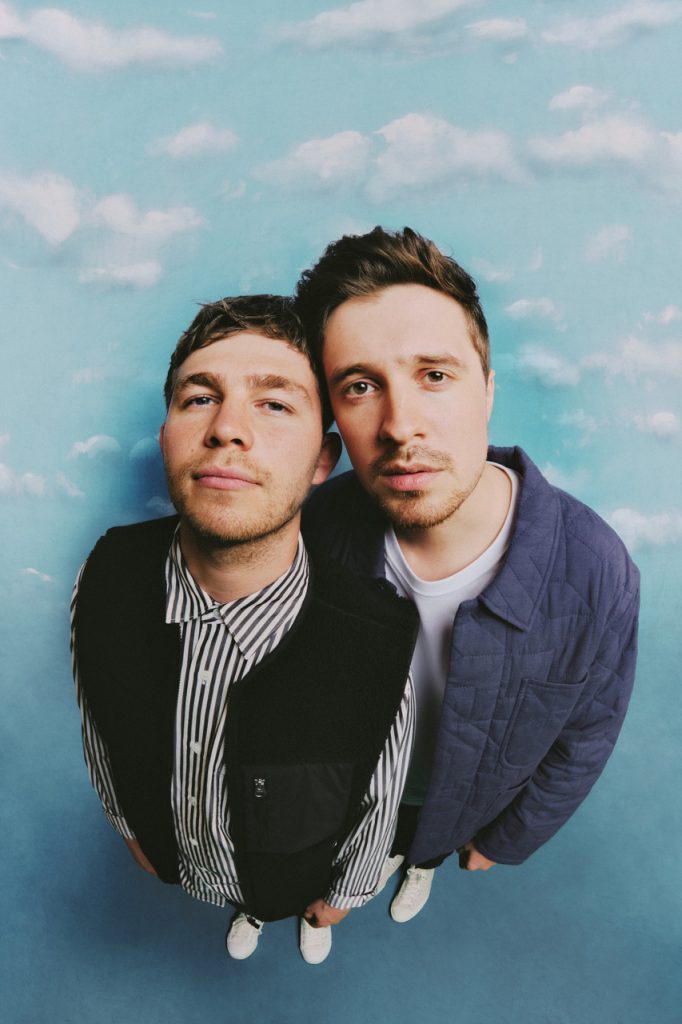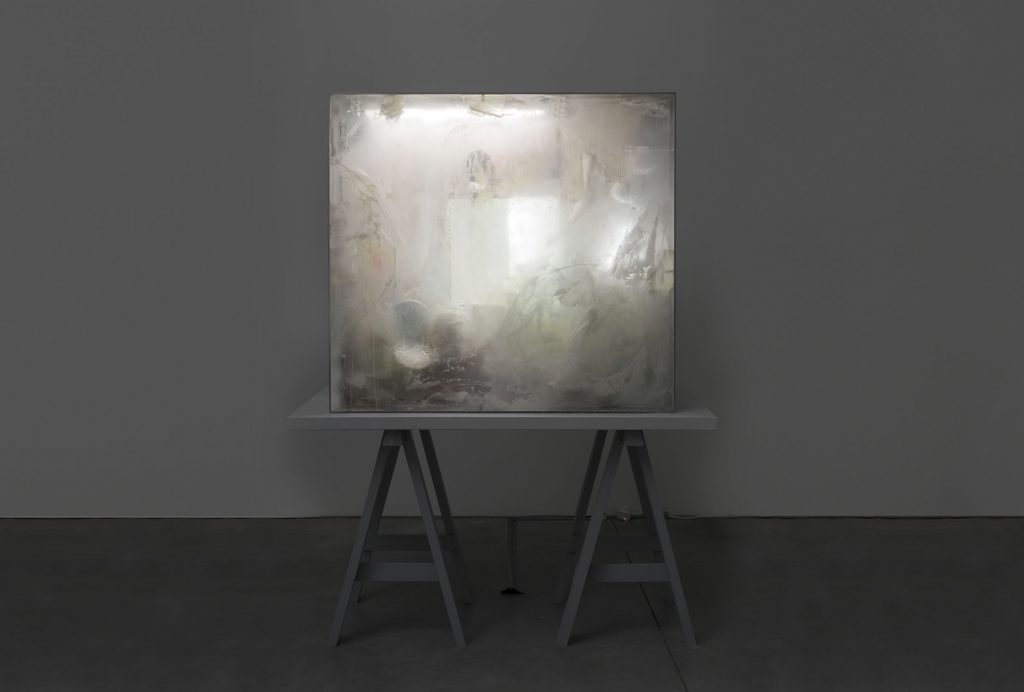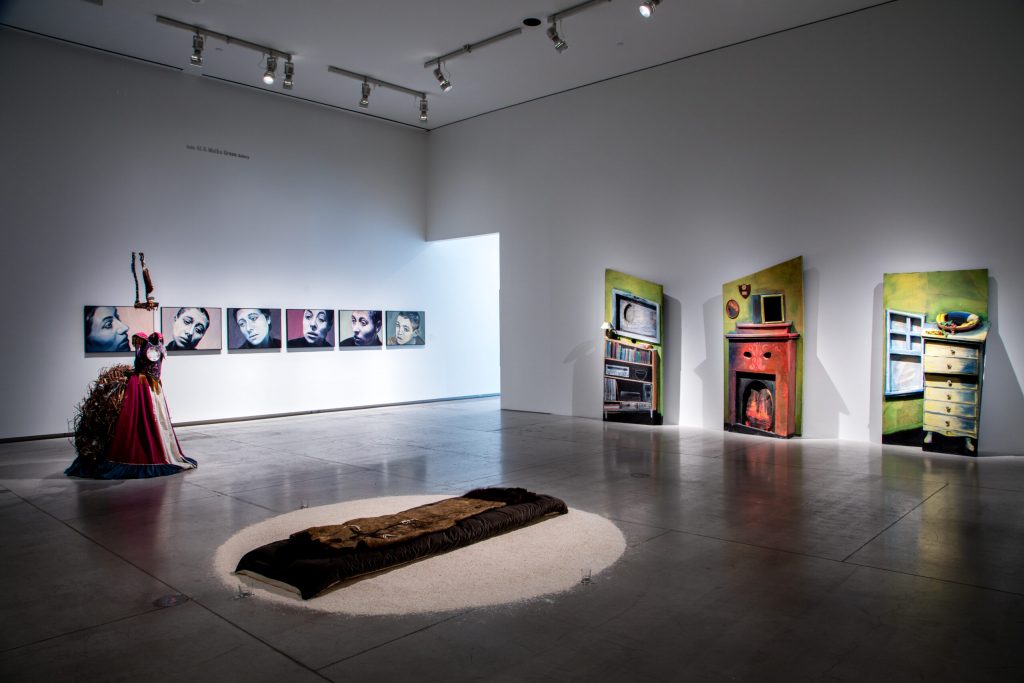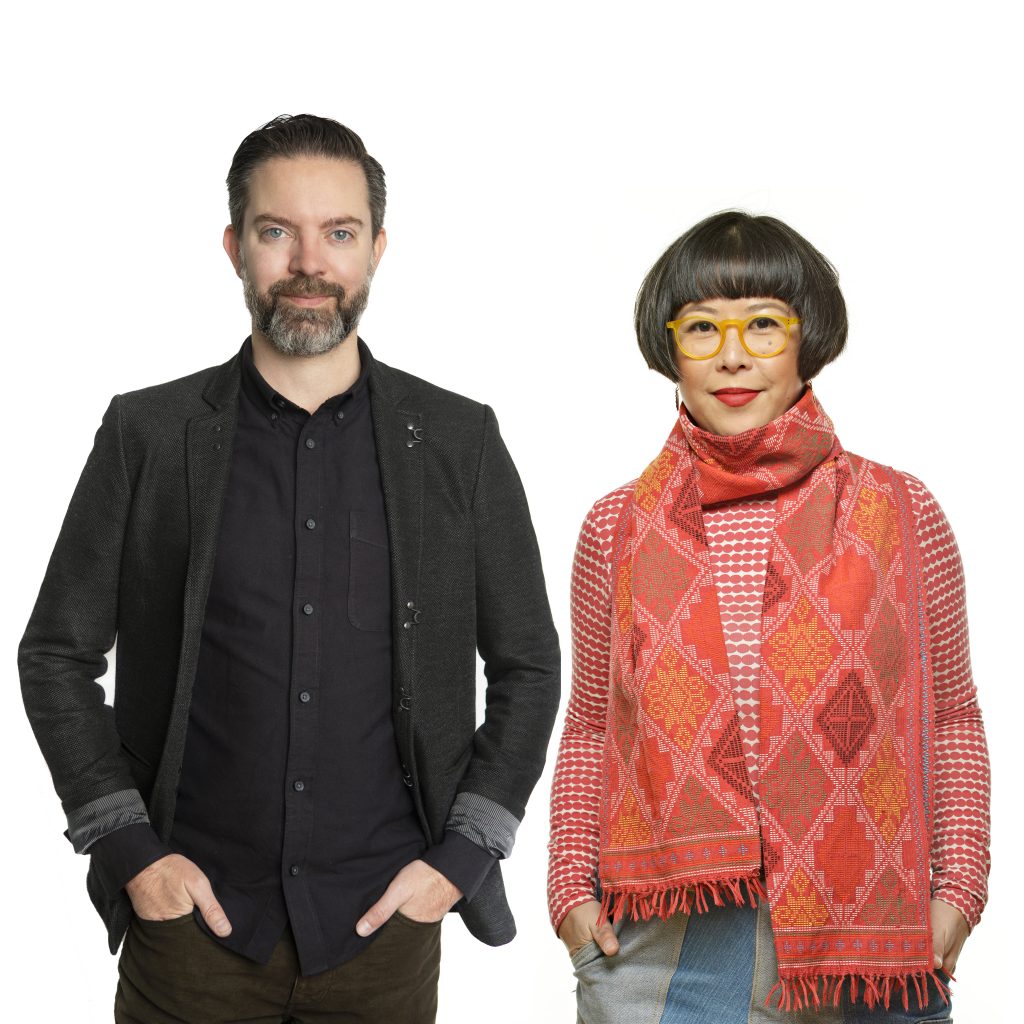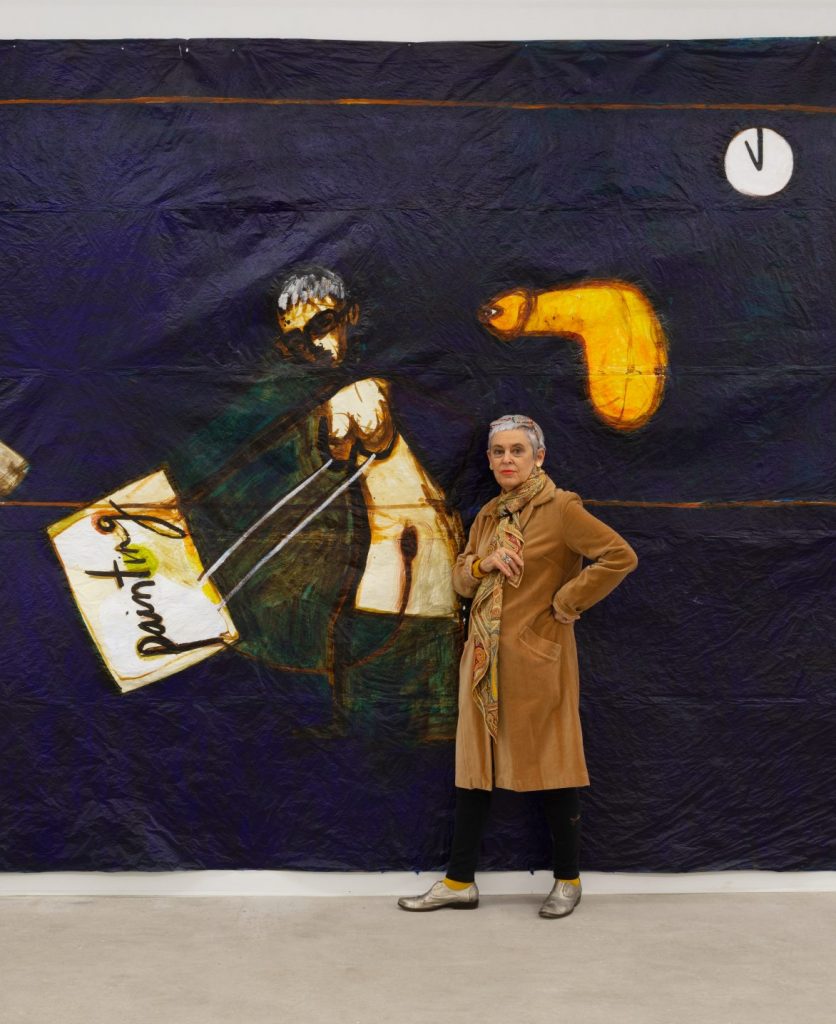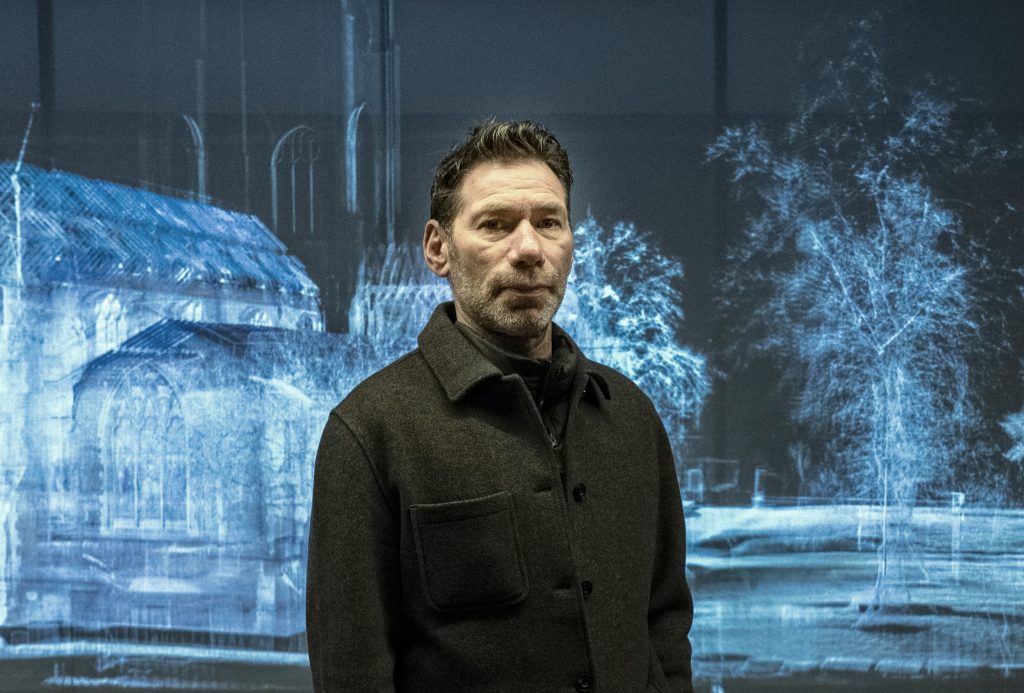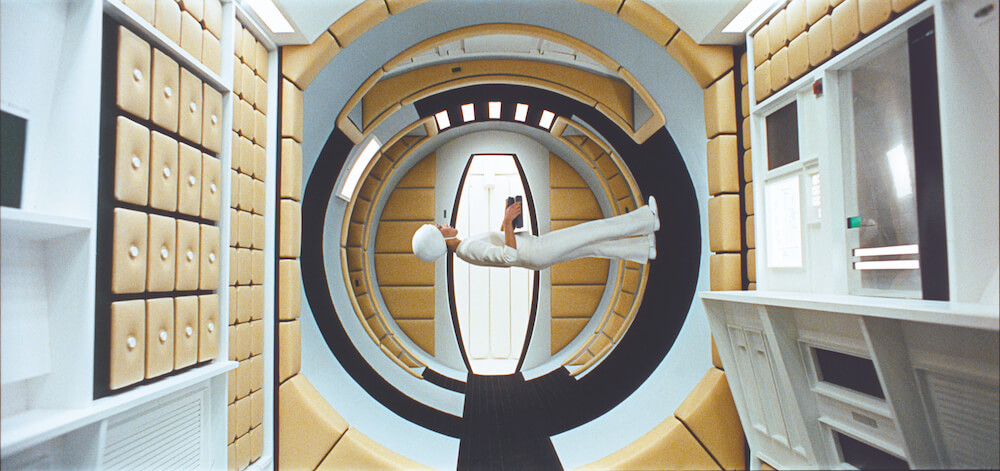Eastward, ho! Flatland Projects in Hastings
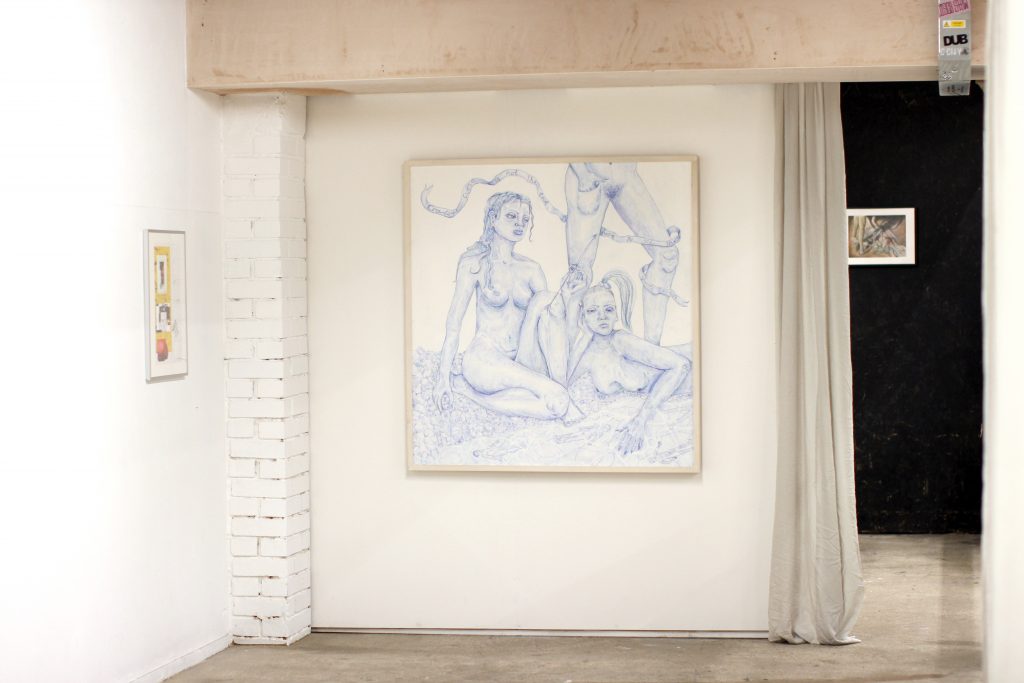
Flatland Projects is an artist-led space in Hastings, UK. Co-founded by the artists Ben Urban and Billy Stanley. With curator and writer Phoebe Cripps joining soon after, Flatland has become one of the most exciting, young alternative exhibition spaces in the UK. Based inside Source BMX Park – a former Victorian bathing pool on Hastings seafront – Flatland programmes a broad range of emerging contemporary art for its local community.
FRONTRUNNER spoke with Urban to find out more.

Mirrored (2019)
Installation view
Curated by Thomas Ellmer
Courtesy of the artist and Flatland Projects, Hastings, UK
Why Hastings? What’s the appeal?
Both Billy and I moved back to our home town of Hastings in 2017, we love the town and the depth of cultural and ritualistic energy that floods through the Sussex coastline. At the point of Flatland’s inception in January 2019, there was very little project space activity in Sussex which focussed on presenting emerging artists practice’s in the context of national / international artist-led spaces. Hastings has an established local art scene which is supported by the likes of the De La Warr Pavilion in Bexhill on Sea, and Towner in Eastbourne. Within a landscape of institutional activity there was, and still is, little project space activity which allows for emerging practice to be celebrated, and given the space and time to develop a first ambitious presentation. It also felt much more enjoyable building a programme of exhibitions outside of the worry of the financial limitations of London. Phoebe has been involved with Flatland’s programme from its very early stages; she curated Slippery Bodies (Feb 2019) with us which acted as part of the extended public programme of Still I Rise: Feminisms, Gender, Resistance during its second iteration at the De La Warr Pavilion. Since then we have worked as a team to produce exhibitions which we hope bridge the gap between regional and major city project space exhibitions. Hastings is definitely the only place we would want to be making Flatland happen. It is really important that it exists here!
What do you mean by “bridge the gap between regional and major city project space exhibitions”? Do you feel that there is a deficiency of ‘rural’ art spaces in England and therefore, feel that it is important to work at the fringe? Or do you want to exhibit urban based artists in Hastings?
When we started Flatland’s programme I was always thinking about the kinds of exhibitions I wanted to be a part of when leaving Goldsmiths, University of London. I recognised that even though I didn’t live in certain areas of the country, I was very aware of, and loved from afar, programmes such as East Bristol Contemporary in Bristol, Three Works in Weymouth and now Scarborough, and Well Projects in Margate. It was only when being invited to exhibit with Jack Lewdjaw and Karanjit Panesar at East Bristol Contemporary that I realised how important it was for Hastings to have a project space that felt connected in this way. Hastings has a foundation course which sends students all over the country to study, I think it is so important for there to be activity in people’s hometowns, so that coming back home feels as connected as possible in contrast to larger cities. I’m not saying we have done this entirely on our own, but I do think Flatland has played an important role in integrating emerging practice with the already existing professional arts network in Hastings and St Leonards in Sussex, and beyond.
I don’t think we are working on the fringe necessarily. I think we are specifically focussed on being able to work with artists to produce projects with time and space as an integral part of the process. This feels more possible here without much of a financial strain. Our location inside the Source BMX Park, which is a former Victorian bathing pool, then ice rink, and now BMX arena, throws up new responses from artists every time we work with someone new. We think a lot about this space being a catalyst for time slowing down – the culture within the park to me, often makes you think about a relationship between the inside and the outside; whether that’s through our underground space on Hastings seafront neighbouring the English Channel, influences of streetwear, or the project space being on the physical side-lines of the BMX bowl.
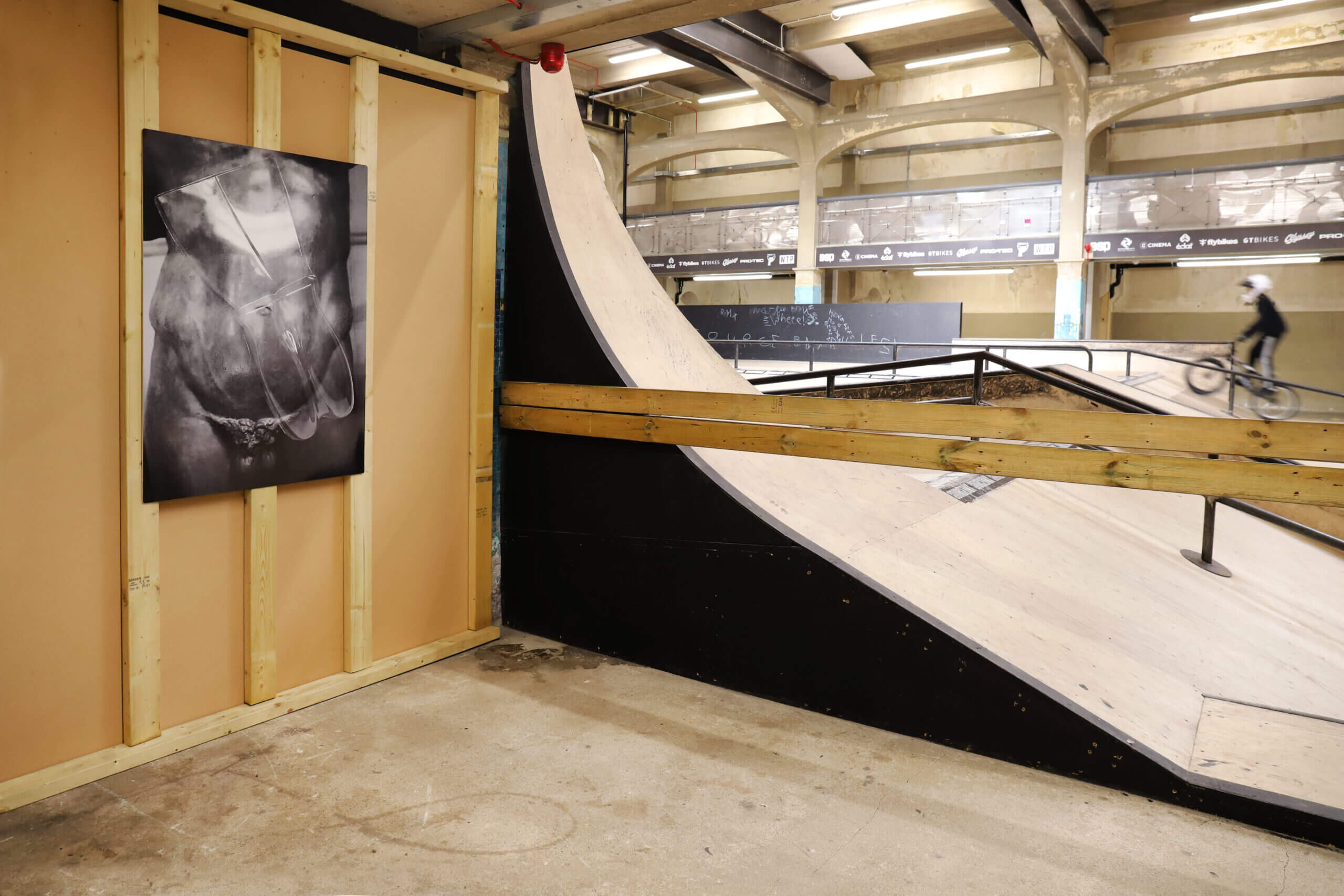
The Room is the Limit (2019)
Installation view
Courtesy of the artist and Flatland Projects, Hastings, UK
Our programme is balanced between working with local, national, and international artists. We have exhibited locally born/based artists who are emerging as much in Hastings as they are in London, such as Jaf Yusuf, William Bartlett, Sophie Barber, Alexi Marshall, and Common Clay ceramics studio. We have also produced an exhibition of BMX coach and photographer Joshua Healey, whose photographs previously only ever existed on Instagram. I think working on the periphery means we have the ability to hopefully survive for longer. Despite the precarity of project space funding models, we are doing our best to work with artists in the best way we can.
It’s interesting that you said “survive for longer”, as if every project space is doomed from the start! There are a lot of factors to the ‘success’ of smaller project spaces: location, funding, ambition, local support, etc. Is Flatland Project publicly or privately funded? If not, how are exhibitions and projects produced?
I probably say survive longer as a means to acknowledge that we are really thankful for the amazing support and trust which we have from Source BMX. They have allowed us the space, whilst giving us the time to really think through how we want to exist as a project. We didn’t know when we first started that it would work, but somehow the heightened environment of the BMX arena makes you slow down and take time in our space. In January 2020, for our project with Common Clay Gathering Container, I was in a constant state of worry because of the ceramics being in amongst the crashing and banging of the park, but because we have developed a side by side relationship with many of the riders, it works. In 2019 we produced 9 exhibitions, the first 5 were self-funded between Billy, Phoebe and myself.
Since September 2019, we have received Arts Council England project grant funding. The funding has allowed us time to begin to rethink and reflect on how we want to exist as a part of the local and regional artistic landscapes. Given the current climate of COVID-19 isolation, we know that people are longing to re-gather and celebrate all what we may have taken for granted within our communities. I think we have a responsibility to react to this situation with our community at the forefront of our plans. All of our shows are produced over a 4-6 month period of conversation with artists to develop a new project, which reacts and considers the space as a way to re-negotiate the pristineness that work is often shown within.
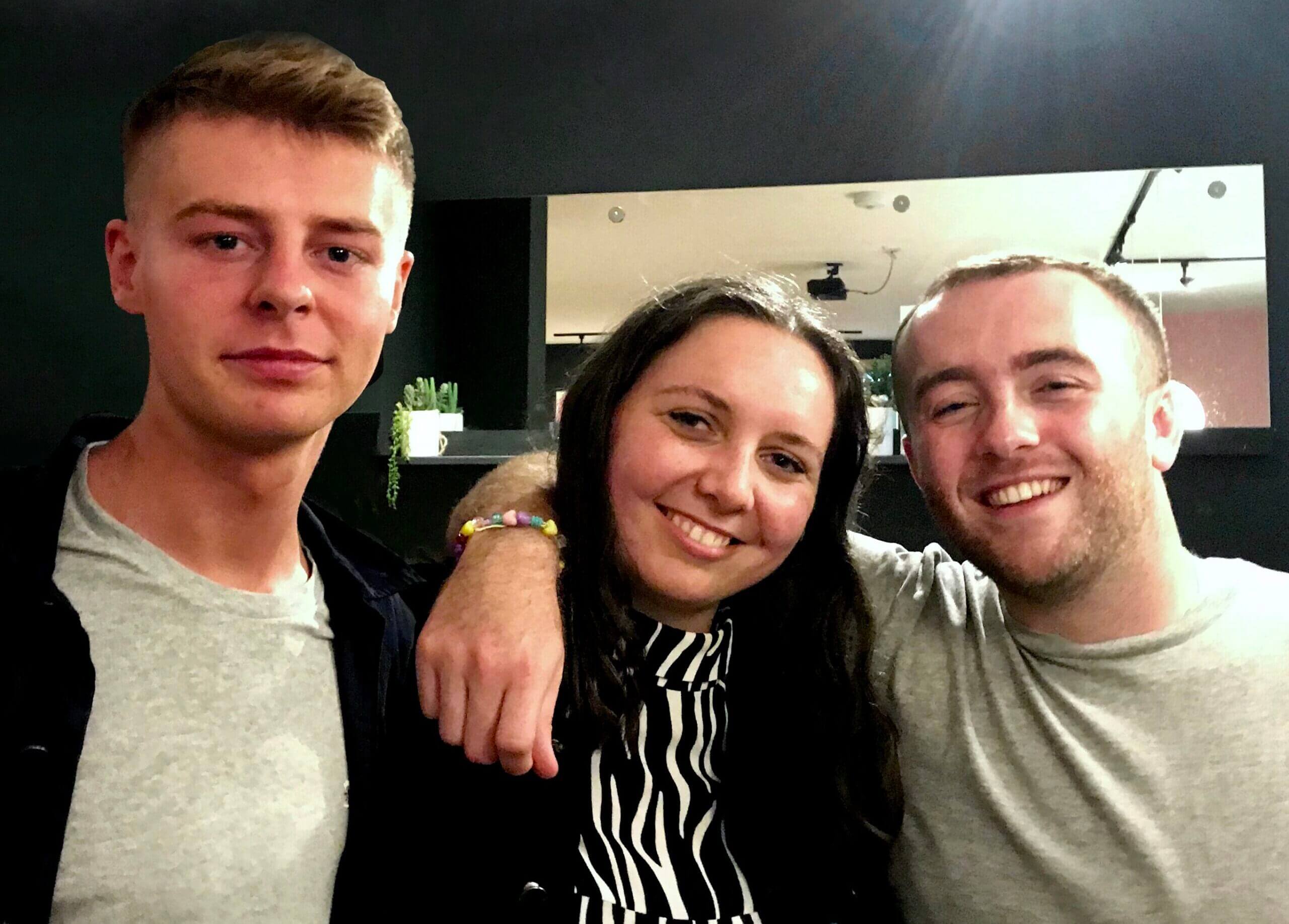
Courtesy of Flatland Projects, Hastings, UK
You mention the COVID-19 Emergency. Considering your location inside a highly social area, how has this effected your operations and future planning?
Given the current situation with COVID-19 forcing us into isolation, I think this has made us more aware of how we can exist for our audience members who are local to Hastings/East Sussex. We have started to develop future strategies for how we can create an online programme and existence that isn’t just virtual shows or good install shots. Despite these being important, I think we can do more. We have started a drop-in service called Chatland Bling which is a telephone session that lends an ear to the artistic community we are in set within. These sessions have also been extended to local students to use these as tutorials/mentoring sessions. We have also been thinking about how we can partner with other local organisations to establish a new existence online. We have been working with South-East London based sound collective EarWax to develop discussions around their upcoming projects, hosting virtual round table discussions, and making promotional material with them for their upcoming project Beyond the Body. I suppose it is more about sharing our platform and resources right now to support one another as much as possible, rather than just posting, reposting, and thinking further than just audience engagement.
Chatland Bling sounds like a really nice project! It seems that you are making the most of this period. Do you think this pandemic will change Flatland?
It’s really fun to get to speak to people in this way, it’s also totally necessary to support artistic development at the moment, especially as we are so closely linked with the BA Fine Art programme in Hastings. I think this period will change most people’s ways of working in the future. Isolation has given us time to reflect on what we want to focus on, and to understand where we could be better. We hope that we will come out of this with a clearer perspective on how we want to engage with our current and new audiences. I really can’t wait to do our ‘Flatland Painting Open’ show which was meant to open in April 2020. The 5 artists we have selected are such great painters and come from a real variety of painting practices! We chose this group with the artist Sophie Barber as our guest panellist, which was really fun. Having to wait to do this exhibition has made us want to get back to it so badly! We had such an overwhelming amount of applications to the open call it made us realise that we want to do more and more to enable new opportunities for artists!
As an artist, do you think it’s important to have that perspective/mindset when running a project space? Is it important to be artist-led?
I think it is important that we approach the ‘curation’ of the programme as ‘exhibition making’, as it feels like a really collaborative process with artists. We try to approach the whole process as if we are building the show with the artists we work with. I think this also allows us to rethink the way that arts organisations are set up. We try to approach all of our operations between Billy, Phoebe and myself, with a completely non-hierarchical way of existing and we hope that this trickles down into the way we work with artists. All of us work, or have worked, in an institutional setting; Billy works as a technician across the South-East, and Phoebe works as a curator at the Hayward Gallery in London. When we approach the production of Flatland’s shows, our experience in institutes and individual studio practices inform our methodologies; this makes it really exciting as we come together with our own specialisms.
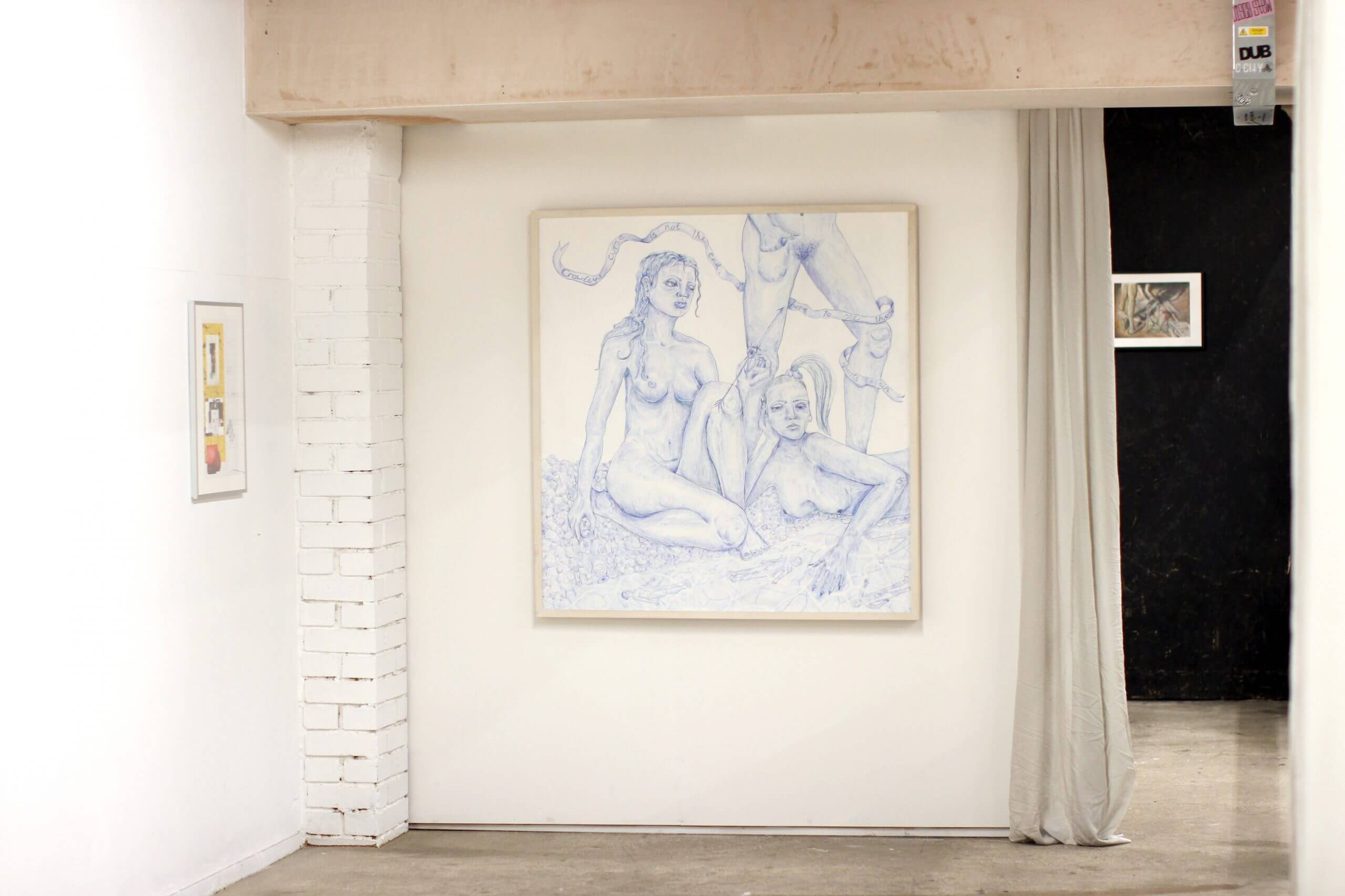
We Always Dance Here (2019)
Installation view
Group exhibition featuring Alexi Marshall, Coral Brookes, Clémentine Bedos, Genevieve Slater,
Gonçalo Neto, Joe Brown, Kate Morris Miller, Molly Harcombe, Rachel Irons, and Sophie Barber
Courtesy of the artists and Flatland Projects, Hastings, UK
I think it’s really important for organisations to approach their programming collaboratively, not just internally, also with those they invite to partake. You mentioned that you each bring your own specialisms into the work, which is equally as important to maintain a diverse team and approach. Has it become part of your practice as an artist, or is it a separate curatorial endeavour? I ask this because there are a lot of artists who also curate, and when I ask, there’s always different answer!
I have found slippages from my own writing practice coming through in my writing about exhibitions and now, the way write about exhibitions seems to have leaked into the studio. When we worked with Greek artist Amanda Kyritsopoulou on her solo show The Room is the Limit (2019), there was a large cross over of practice which stemmed from conversations we had had since leaving Goldsmiths about working together; eventually a show at Flatland became the outlet that we were looking for! Flatland’s programme has naturally become part of my practice because I am thinking about them both at the same time. I think a lot about the BMX arena as a space where time slows down, when the riders are doing tricks in the air it almost feels as if they are going in slow motion; noticing every single detail. This is now something I am thinking a lot about in my drawings, where time kind of runs out and the landscape is all we have left to gain any sense of time from.
I think we’ve kept our “curatorial practice” quite loose when it comes to the way we develop the exhibitions. Phoebe’s way of working on Flatland’s Projects is an extension of her curatorial practice at Hayward, but Flatland gives her the time and space to think through different strands of programming in a completely different way. Billy’s experience as an artist and technician is vital in the process of making the exhibitions. Because of our experience working in larger organisations, we strive for exhibitions at Flatland to feel professional, as if they were in an institutional space.

